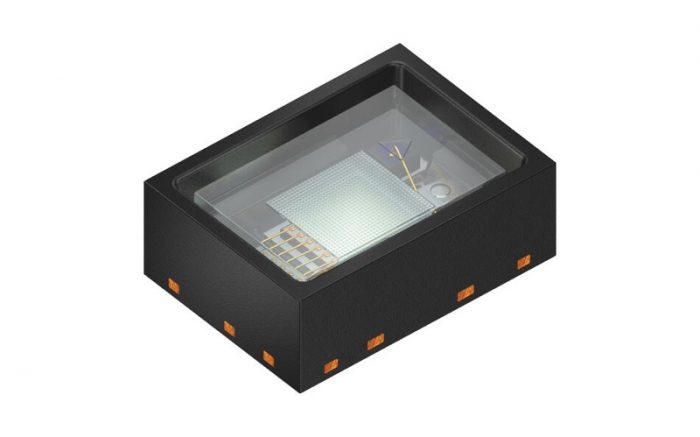ams OSRAM added four new VCSEL modules to its 3D sensing portfolio

ams OSRAM, a global leader in optical solutions, expands its 3D sensing portfolio with four new VCSEL modules. The number of applications which utilize 3D sensing technology continues to increase: From the detection of the surroundings for robots to avoid collisions to the unlocking of smartphones via facial recognition. But 3D sensing also plays an important role for augmented and virtual reality (AR/VR) glasses. Thanks to components like Bidos P2433 Q from ams OSRAM, various gestures can be reliably captured, raising the interaction between user and AR/VR glasses to a new level. The compact package also allows customers specific design flexibility.
For augmented and virtual reality devices, as well as other 3D world-facing applications, the focus is on maximum user experience combined with compact and light-weight design. In the 3D sensing market, Vertical Cavity Surface Emitting Lasers (VCSEL) have a huge impact due to its good beam quality, cost efficiency and simple design. “With the expansion of our Bidos family we offer one of the smallest VCSEL packages available on the market for 3D applications at given power levels and field-of-illumination”, explains Simon Gubser, Product Manager at ams OSRAM. “By integrating the matching emitter and photodiode in one compact module, we reduce the installation effort for our customers significantly.”
Bidos P2433 Q is available in four different versions including two different fields-of-illumination and two output power levels. The VCSEL-based modules with a size of 3.3 mm x 2.4 mm are suitable for 3D sensing applications using Time-of-Flight (ToF) measurement, which require a homogeneous illumination of the scene. Due to their wavelength of 940 nm, all modules are also free from the red glow effect, which is perceived by the human eye as disturbing flickering.
The two higher power modules with 6.5 watts use dual-junction VCSELs for outstanding performance and efficiency of up to 45%. In addition, a photodiode monitoring system is integrated into the module as a special protection mechanism for eye safety. If the photodiode registers a change in the incidence of light – for example, if the optics are damaged – the current supply to the VCSEL is interrupted.
Besides 3D gesture recognition, the four new modules can also be used in industrial robotics for obstacle avoidance and virtual fencing, or in 3D face authentication systems in smart door locks or point-of-sale payment terminals.
For more information, please visit http://www.ams.com.
News Categories
- » NEWS HOME
- » Automation & Robotics
- » Industry 4.0
- » Material Handling
- » Sensors
- » Quality & Testing
- » Machine Vision
- » Laser & Optics
- » Metalworking
- » Motion Control & Drives
- » Hydraulics & Pneumatics
- » Process Industry
- » Renewable Energy
- » Agriculture
- » Home & Office Furniture
- » Environmental Tech

